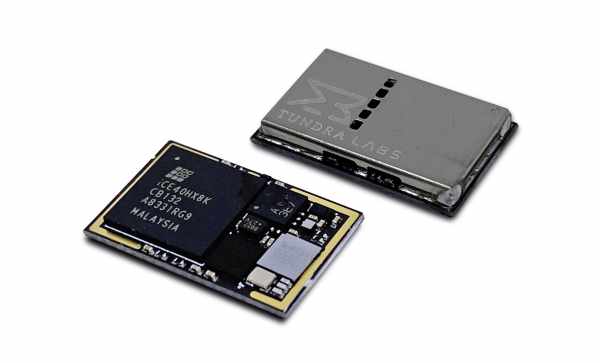Nordic Semiconductor today announces that Tundra Labs, a Green Bay, WI-based technology company, has selected Nordic’s nRF52832 multiprotocol System-on-Chip (SoC) for its ‘TL448K6D-VR module’.

The TL448K6D-VR module assists developers to simplify and lower the cost of designing six-degrees-of-freedom (6DoF) tracked devices for Valve’s SteamVR gaming platform. The highly integrated module employs the 3.0 by 3.2mm Wafer Level Chip Scale Package (WL-CSP) version of the nRF52832 SoC to deliver an ultra compact 10 by 16.35 by 2.01mm System-in-Package (SiP) form factor weighing less than 1g. A compact and lightweight form factor is a key attribute for body-worn devices as well as head-mounted displays. In addition to virtual reality (VR) and augmented reality (AR), the module is suitable for computationally intensive tracking, eye tracking, sensor fusion, and motor control applications. The modules are produced in volume, programmed with the latest SteamVR firmware, and functionally tested.
The nRF52832 SoC’s RF performance and multiprotocol support were key requirements, particularly its backward compatibility with nRF24L Enhanced ShockBurst protocol
In addition to the 6DoF inertial measurement unit (IMU)—including a 3-axis accelerometer and 3-axis gyroscope—the module comprises the 64MHz, 32-bit Arm® Cortex® processor-based nRF52832 SoC, a second 120MHz Arm Cortex M4 processor, an 8k LUT field-programmable gate array (FPGA), two precision MEMs oscillators, and a crystal oscillator.
The nRF52832 SoC’s powerful Arm M4 processor is designed support the Floating Point (FP) and Digital Signal Processing (DSP) computations typical of high-end wireless applications. The SoC also integrates a 2.4GHz multiprotocol radio (supporting Bluetooth® 5, ANT™, and proprietary 2.4GHz RF protocol software) featuring -96dB RX sensitivity, with 512kB Flash memory and 64kB RAM. The SoC is supplied with Nordic’s S132 SoftDevice, a Bluetooth 5-certifed RF software protocol stack for building advanced Bluetooth LE applications. Nordic’s software architecture includes a clear separation between the RF protocol software and the developer’s application code, simplifying development and ensuring the SoftDevice doesn’t get corrupted when developing, compiling, testing, and verifying the application code. The S132 SoftDevice features Central, Peripheral, Broadcaster and Observer Bluetooth LE roles, and supports up to twenty connections.
